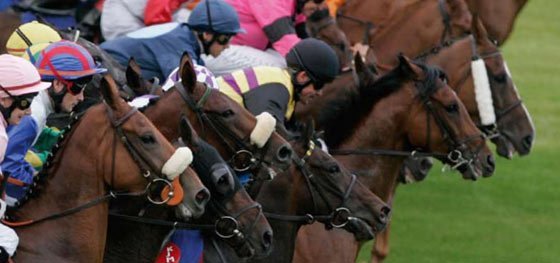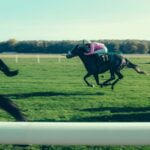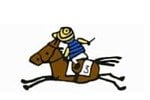 “In the world of mules there are no rules “
“In the world of mules there are no rules “
Ogden Nash
The well known American poet may have been feeling particularly disaffected after another losing bet, but in the modern racing world, there certainly are rules. The Turf Club is responsible for ensuring these rules are adhered to as the racing regulatory body, while Horse Racing Ireland is the national authority responsible for the overall administration, development and promotion of racing in Ireland today.
Horse Racing Ireland
HRI’s mission statement is “to develop and promote Ireland as a world centre of excellence for horse racing and breeding.” Established in 2001 by the Horse and Greyhound Racing Act, its functions include:
• The development of racecourses
• The guaranteeing of prize money
• The control of authorised bookmakers
• The allocation of fixtures and setting of race programmes
• The operation of racecourses owned by the authority – Fairyhouse, Leopardstown, Navan, Tipperary
• The operation of the Tote
• Supplying grants, loans or other unding to racecourses
• The promotion and export of the Irish horse through Irish Thoroughbred Marketing
• Representing Irish racing Internationally
• The negotiation of income from media and broadcasting rights HR I is financed by a combination of government grant and other income streams.
Turf Club
The Turf Club is the racing regulatory body for horseracing in Ireland, responsible for maintaining the integrity of the sport in Ireland since its inception in 1790. Incorporating the Irish National Hunt Steeplechase Committee, it is responsible for both flat and national hunt racing, including the point-to-point circuit. A private body responsible for enforcing racing’s rules, it comprises members elected for their knowledge and experience of racing, in both a sporting and business sense.
On the track, between three and five stewards police the rules. So when you hear an announcement that there’s a stewards’ inquiry, it means that something that has transpired during a race is being investigated. 
Industry bodies
Racing Academy & Centre of Education:
RACE offers a host of courses for people interested in pursuing a career in the equine world, ranging from jockeys and stable staff to trainers or farriers.The 30-acre site on the Curragh boasts all-weather gallops, an indoor schooling arena, horse simulators, an integrated training centre, sports analysis software, classrooms and single room accommodation.
Irish Racehorse Trainers Association:
The IRTA has represented licensed racehorse trainers in Ireland since its foundation in 1950 by some of the most revered figures in Irish racing, including Vincent O’Brien, Cecil Brabazon, Darby Rogers and Dan Moore. There are approximately 430 members at present, with the Association’s collective voice helping to improve trainers’ input into the way racing is run in Ireland and to address the major issues concerning them.
Association of Irish Racehorse Owners:
The AIRO was set up to promote and protect the interests of racehorse owners and has been officially recognised as the representative body of racehorse owners. Amongst its goals are to ensure that the level of prize money is at least maintained and, where possible, increased; to work with HRI to obtain more opportunities for horses; and to improve facilities for owners at tracks.
Irish Jockeys Association:
The IJA represents licensed jockeys in Ireland, championing the improvement in facilities around the country for the men and women who coax and cajole the horses towards the winning post. It also funds the Irish Jockeys Trust, a charity that helps current or former jockeys that have fallen upon hard times through no fault of their own
Irish Stablestaff Association:
The ISSA has played a massive role in improving the status, pay and working conditions for stable staff in recent years. It has also provided education opportunities for its members, while its annual awards night has increased the profile of so many previously unheralded workers.
Association of Irish Racecourse Owners:
Not to be confused with the AIRO, the AIR was established to further the interests of racecourses in Ireland generally, and more specifically, to represent racecourse owners and executives, be that on an individual or collective basis.
Irish Thoroughbred Breeders’ Association:
The ITBA is a voluntary association that represents the Irish thoroughbred breeding industry both domestically and abroad. It represents breeders on the boards of all the major industry bodies, while also offering a comprehensive educational and training programme of skill enhancement.
Key industry statistics
• Horseracing and breeding supports more than 22,000 jobs, mainly in rural Ireland.
• There are 26 racecourses in Ireland, which is more per head of population than anywhere else in the world.
• There are 29,289 stallions, mares and foals in Ireland; this includes 271 stallions, 18,851 mares and 10,167 foals.
• Ireland is the 3rd largest producer of thoroughbred foals in the world (following USA and Australia).
• There are 11,363 racehorses in Training.
• Racing is a popular pastime in Ireland with over 1.24m people going through the turnstiles each year.
• Almost 70,000 overseas visitors each year attend at least one race meeting during their trip to Ireland.
Statistics from the 2009 HR I Factbook and the Dukes Report
Content courtesy of Go Racing Ireland, with thanks
Allison is the Publisher of Eclipse Magazine. She loves going to the Races and is learning to bet (despite being officially the worst bettor in the History of the Universe), there’s a lot more to learn…




